Style Check! Part 3: Mid-Century Modern, Industrial & Minimal Décor
Our ‘Style Check’ series continues this month with a look at 3 interior design styles that incorporate many of the same elements, but have a completely different feel; Mid-Century Modern, Minimalism, and Industrial. All three styles primarily formed as a reaction and breaking away from the over-embellishment of the past and it is interesting to see how they have evolved over the years.
As with all the articles in this series, it is not a definitive guide to the style. There are numerous in-depth articles and books devoted to the various styles for those who are interested.
Mid-Century Modern Style:
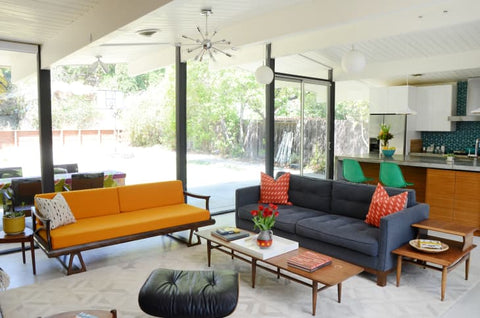
Mid-Century Modern at its best - Image Credit: Esteban Cortez - www.apartmenttherapy.com
There was an influx of German designers who emigrated to America in the years following WWII. It was an atmosphere ripe for change, and these designers brought a slew of modern design ideas that found a wide and welcoming audience ready to embrace a more modern, organic way of living. By the end of the 50s, these retro-futuristic designs dominated style trends, spreading from America to the rest of the world.
This was the era where developments in materials like plastics, and modernised mass-production methods had been fine-tuned during the war years for the speedy manufacture of munitions. This heady combination saw furniture being made in vast quantities incorporating colours that had not been available to furniture designers or manufacturers before. The style fitted perfectly into the space-race excitement of the 1960s and remained popular until the early 1980s.
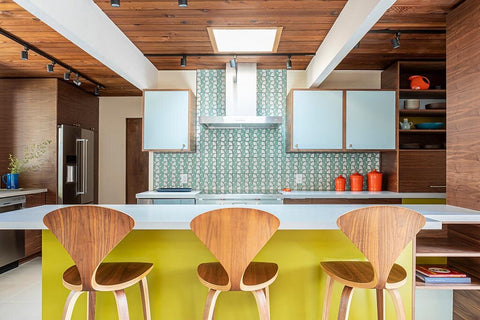
A Mid-Century Modern kitchen in every way! Image: Christopher Dibble www.destinationeichler.com
What defines mid-century modern style?
-
Furnishings with simple, sleek lines.
-
Form following function (a core principle developed in the Bauhaus school and applied to many interior aspects).
-
Wide use of hairpin metal or thin wooden legs in furniture pieces.
-
Use of manmade materials like plastic, fibreglass and vinyl mixed with naturals like wood, metal and glass.
The most popular woods of the period were teak, followed by rosewood and oak. These were complimented with the use of metal, glass and plastics, deliberately combined to create a visually stimulating tension between materials.
In the same way that the architecture of the era placed an emphasis on indoor/outdoor living, the use of plants is encouraged. Try to use simple window treatments that bring a sense of continuity between the interior and exterior.
The use of bright accessory colours against neutrals colours and plain woods is a hallmark trait of this style. Use nature as your palette guide and favour accent hues like the oranges, yellows, and reds of Autumn, botanical greens, earthy browns and reddish clays, turquoise, duck-egg and sea blues. Mid-century modern design tends to play on retro looks and often makes use of bright accent colour to emphasize this point

Image: The epitome of Mid-Century Modern design - The Eames chair and footstool/ottoman
Choose a statement mid-century piece, like an Eames chair, a kidney-shaped feature table or a metallic sunburst mirror or clock and use it to build the theme on. Wood is a key feature in decorating the mid-century modern home and you should ensure that the woods work together. For example, if using predominantly teak, don’t introduce zebra woods or ebony as they will clash.
A point to consider is that furniture of the past was not designed to accommodate today’s modern tech and appliances. Today’s enormous flat-screen TV’s and monitors can look completely out of place on a 1950s television stand that was designed for a much smaller, bulkier unit. Societies needs were different, as were their household appliances.
To conclude, the trick to mid-century modern design is to avoid looking like a museum. Your feature furniture pieces should balance with the rest of the décor. After all, the era was the epitome of form following function, so make sure that your furnishings are capable of handling normal daily use.

The Piccadilly Coffee Table from Leonardo - Tables by Design is a perfect pick for a MCM room. The design infuses a quiet strength into a sophisticated and timeless piece. The generous tray-edged top is supported by a slender, yet sturdy base, honouring the ethic of incorporating maximum practicality while occupying minimal space

The cleverness behind the Eindhoven Side Table belies its visual simplicity. Reminiscent of mid-century design aesthetics, the sturdy, yet elegant base offers maximum stability while presenting a sleek and pleasing silhouette. The Oak Veneer top adds the warmth of wood to complete this future classic. A favourite with interior decorators.
Industrial Style:
Industrial décor was mainly inspired by the conversion of old factory and industrial spaces into urban living and retail areas. Stripped-back architecture, exposed bricks and pipes, raw elements and weathered surfaces set the background for the look.

A beautiful example of Industrial style using exposed surfaces and light to create drama in a room that still looks warm and inviting. Image Credit: www.ubwood.co.uk
When looking at the origins of the style one needs to start with the industrial revolution. This was a crucial point for interior décor as it saw a rise in social and economic changes. After the war years, many of the factories closed and those that were not listed for demolition were converted into living spaces. Exposed beams, fittings and brickwork were embraced. Large windows allowed light to flood into the areas – a feature that contrasted with the dark, stuffy interiors of the past.
Versatility is key when choosing materials for the Industrial look. Natural weathered woods, metals, leather, concrete and composites can be incorporated easily. Choose some feature pieces and build around them. Re-purposed industrial and commercial fittings like a large bare wooden working table, worn metal occasional tables and stainless-steel catering kitchen units can be softened with the mix-match of chairs, stools and fun accessories. Distressed wooden finishes, large industrial light fittings, comfortable worn leather sofas, a few ‘antiques’ combined with vinyl or plastic pieces - these can all work perfectly in the Industrial setting.
Favoured colours include neutrals such as chalky whites, dark greys and blacks as the dominant surfaces such as floor and wall covering. Liven up the area with tones of yellows and warm browns in the furnishings. Traditional fabric designs such as geometrics and plaids are true to the era but can be updated with the use of softer fabrics and brighter, muted shades.
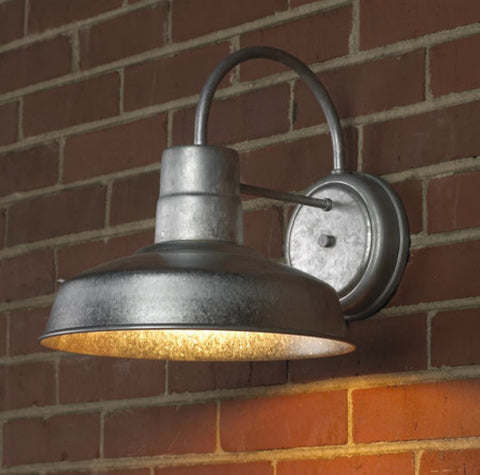
Plants and foliage tend to thrive in these bright spaces and are the perfect way to soften the look.
Accessorising the Industrial space can be fun. Depending on you interests and lifestyle, vignettes of old bar equipment such as soda syphons and jiggers, old cameras and photographic equipment, vintage sporting equipment etc can fit perfectly into the equation and be combined with modern items and ornaments easily. Brighter pops of your favourite colours and shades can be introduced with cushions, throws and rugs.
The Industrial look is extremely forgiving, and unless you are set on creating a ‘period Industrial’ look, it is pretty much a case of anything goes - as long as it feels good, looks good and doesn’t look too out of place. It is also an easy style to update as trends change or you feel like injecting some new energy into your environment.

Unusual design with industrial and steampunk undertones is the hallmark of The Dalston Side Table. This new addition to our table range is inspired by London’s new trendy areas of Dalston, Hoxton and Shoreditch. The wide range of finish options puts the Dalston as at home In the edgy boutique hotel or funky eatery as it is in the Industrial home.

The Eifel Coffee Table is from the Leonardo - Table by Design's archive collection and is available on special order. The styling is perfect for the Industrial project.
Minimal Style:
One could say that minimal interior décor design is a happy marriage of mid-century modern and industrial interior styles. Where the mid-century is decidedly retro and uses bright accents, Minimalism strives for the same functionality, but with a more understated look with the utilitarian and airy feel of Industrial design, without the emphasis on the use of recycled / re-purposed furnishings and raw surfaces. Like Industrial, minimalism accentuates attractive and interesting architectural features, but without stripping them to their base materials.

Simple elegance in this warm-toned minimal scheme. Image Credit: www.gharpedia.com
The word Minimalism, perfectly describes the clean lines, simple, monochromatic ‘less is more’ concept of interior design. The aim of this style is to create just the right balance of furniture and open space to make an area feel comfortable, unfussy, easy to live in, and most importantly, resolved in its design.
What minimal isn’t is choosing a few items of furniture to place in a white space without any thought.
Like mid-century modern, form follows function in the minimal space. The typically open floor plan is carefully planned for optimal flow with the maximum usage of light. Furnishings are few, but they are well made, and comfortable, with clean, simple lines and little to no embellishments, and everything should have its perfect place and specific purpose. The clever use of ottomans and pouffes allow for seating arrangements to be adapted easily.
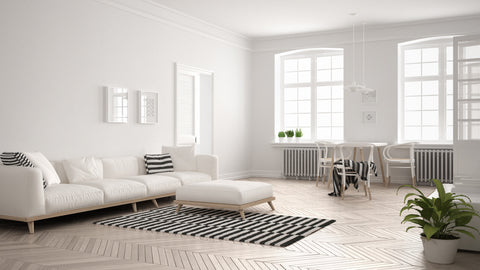
The weight of your furnishings and how they relate and ‘speak’ to each other is an interesting consideration. When looking around your room are there any pieces that feel ‘to heavy’ or jarring? If so, remove it and re-evaluate the energy of the space.
A minimal interior will not easily date thanks to the neutral backdrop. As bolder and brighter colours and prints are simply introduced as accents in cushions, rugs and throws, they can be quickly updated to the season’s latest palette trends if desired, or when you want to inject some new energy into the space.
Clutter is a no-no in the minimal space! Limit the use of ornaments and groupings. A ‘display tray’ can work well to show a collection of small items, and be easily moved to safety if need be.

Let the view dominate the room, rather than the room dictate the view. Image Credit: www.decoraid.com
Often, it is not necessarily the room or area that always has to be the main focus of attention, but maybe a view from a window that dominates the space. Even if you aren’t lucky enough to have a captivating view, you could create an interesting arrangement of plants as an indoor garden, or a group hanging of containers. This will help bring nature into the space, along with all of its benefits.
Storage space is always important in any home, especially in a minimalist environment. Furnishing incorporating storage is always popular. Try to keep any trimmings, handles and hinges minimal, or preferably hidden.
In minimalism nothing is added for effect. It relies on the beauty of the materials and form of the objects that you choose, to carry the theme. Although simple, items shouldn’t be boring and designs need to be clear. The use of light, form, quality of choice of materials should be carefully considered. Remember, hiding mistakes is very hard to do in a minimal interior and there are no easy fixes.

One of the main challenges of the style is to make the space look warm and welcoming. With any monochromatic style, build interest with differing hues and shades of the same core neutral colour to bring dynamism and interest.
Principles of minimalism can be used in all décor styles that require a clean, orderly, uncluttered feel. As with all artists, the trick is to know when to stop decorating! As with all of the décor styles we have covered during the course of the Style Check! Series, this is just an outline of what characterises Minimalism, and not a definitive guide. There is a huge amount of reference material on the internet for those wanting to delve deeper. The main thing to remember is to have fun!
For those who don’t feel confident enough to tackle the task single-handedly, enlist the help of your interior decorator or designer to help create an interior specific to your tastes and lifestyle. I have included a list of reference articles for the styles covered in this month’s blog at the bottom of the page.
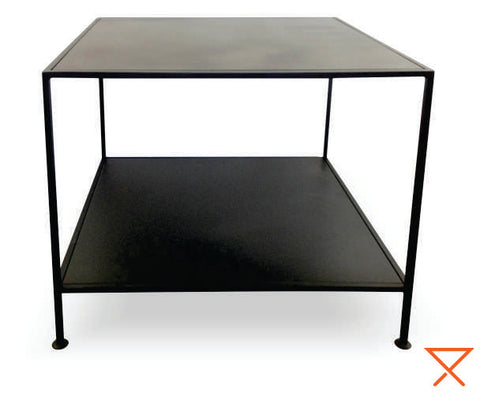
Sometimes the simplicity of a design is its strength; such is the case with our Parker Side Table. This understated and infinitely practical table has a place in any décor scheme and therein lays its timeless appeal

With a widthof only 450mm the Beta is ideally suited to narrow rooms and functions perfectly as either a coffee table or low console. The en vogue tray top adds style interest and sits perfectly atop the simple metal frame, so adding just the right amount of design detail without dominating the overall minimal simplicity of the piece.
I hope you have found this month’s article interesting and that you feel inspired to tackle your next interior project. Next month’s article covers only one interior style – Mediterranean. The reason is that it is such a widely encompassing style, and depending on where along the Mediterranean coast you are, has distinct differences. A few paragraphs just wouldn’t do the style any justice!
View the full Leonardo collection on our web page, or chat with the Leonardo team to discover how we can bring our three decades of experience to YOUR table.
Until next month,
Yours in Style - Frank
---------------------------
Reference article – Mid-Century Modern:
https://www.masterclass.com/articles/mid-century-modern-design-guide
https://www.thespruce.com/things-you-should-know-about-mid-century-1391827
Reference article - Industrial:
https://spacia.ca/en/blogue/what-is-industrial-interior-design/#:~:text=It's%20a%20style%20inspired%20by,resistant%20to%20wear%20and%20tear.
Reference articles - Minimalism:
https://www.elledecor.com/design-decorate/interior-designers/a27471472/minimalist-interior-design-tips/
https://www.thespruce.com/what-is-minimalist-design-4796583
























